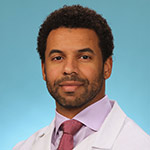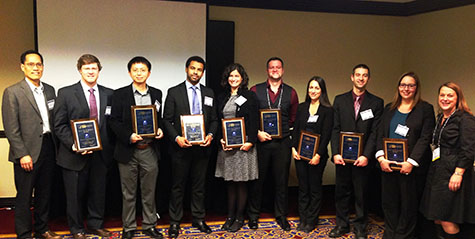
The Human Connectome Project aims to identify the neural pathways that underlie brain function and behavior. Building on that work, a new study at Washington University School of Medicine in St. Louis is focused on understanding how those pathways differ in people with psychiatric illnesses.
A five-year, $2.3 million grant from the National Institute of Mental Health (NIMH) of the National Institutes of Health (NIH) will support the research, which will involve patients with schizophrenia, depression and bipolar disorder. The grant was one of a small number of “Biobehavioral Research Awards for Innovative New Scientists (BRAINS)” awarded by the NIMH this year.
“We’re trying to look at diagnosing psychiatric illness in a different way,” said principal investigator Daniel Mamah, MD, assistant professor of psychiatry. “In psychiatry, our diagnoses are based mostly on symptoms reported by the patient, but we want to look at connectivity in the brain and see whether we can learn how the brain functions differently in people with psychiatric disorders.”
Researchers will use high-resolution scans of the brain to identify structural and functional connectivity patterns in patients with psychiatric disorders. Those images will be compared with brain scans of people without mental health disorders. Meanwhile, subgroups of individuals with related connectivity patterns will be analyzed.
Mamah and his colleagues will conduct resting-state and task-based studies of functional connectivity in the brain and determine how various brain regions work together in networks when the brain is at rest or when a person is performing specific tasks.
“We’ll look at the sizes and shapes of brain structures and learn more about how brain networks function, and then we’ll compare our findings in people with psychiatric illness to imaging studies done in healthy people,” he said.
Mamah and other researchers believe that although psychiatric patients may have similar clinical symptoms, their underlying causes may differ and that high-resolution imaging may help identify those distinctions.
For more information about the study and the BRAINS grant, visit this website.

This work is supported by the National Institutes of Health (NIH), grant number R01 MH104414.
Washington University School of Medicine’s 2,100 employed and volunteer faculty physicians also are the medical staff of Barnes-Jewish and St. Louis Children’s hospitals. The School of Medicine is one of the leading medical research, teaching and patient-care institutions in the nation, currently ranked sixth in the nation by U.S. News & World Report. Through its affiliations with Barnes-Jewish and St. Louis Children’s hospitals, the School of Medicine is linked to BJC HealthCare.